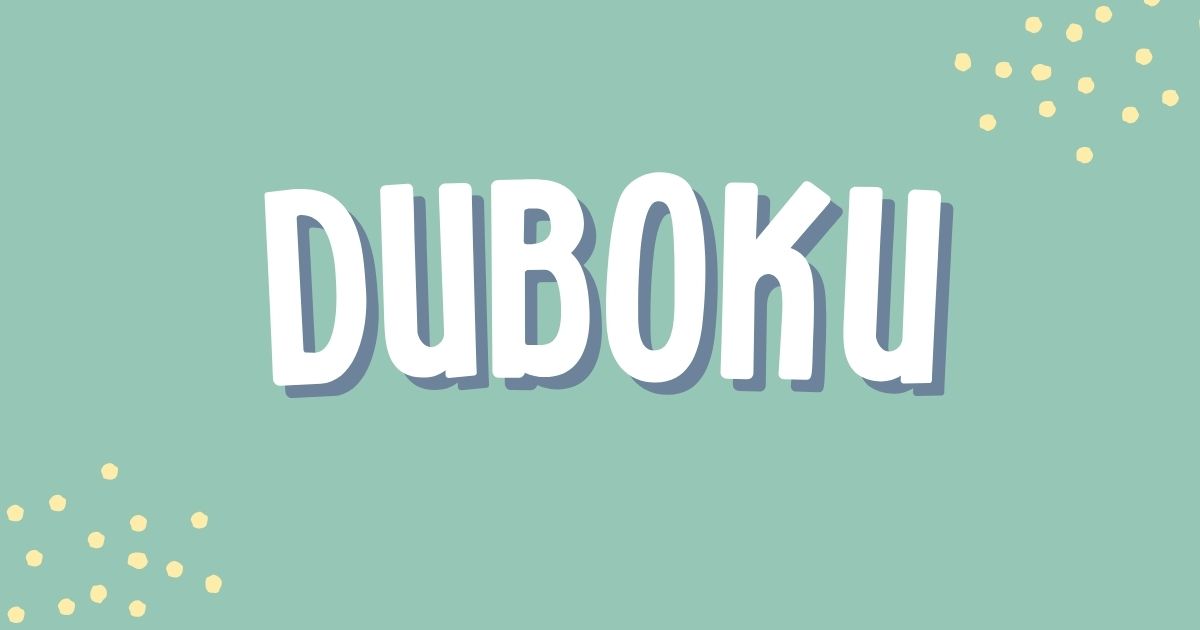General
GMT -5 Time Zone Facts: Unveiling Its Global, Daily Effects!

Time is the one constant that ties our global society together, and understanding its nuances can make a world of difference. When we talk about GMT -5, we’re referring to a time offset that plays a crucial role in the daily lives of millions. This article delves into the essence of the GMT -5 time zone, its origins, its influence on communication and commerce, and how it shapes daily routines in various regions. Whether you’re a business professional coordinating meetings across continents or a traveler trying to catch the perfect flight, getting a grasp on GMT -5 can help simplify your scheduling woes and enrich your understanding of global time management.
Understanding GMT -5
GMT -5 is a designation used to indicate that the local time in a region is five hours behind Greenwich Mean Time. In simple terms, if it’s noon at the prime meridian in Greenwich, UK, it would be 7:00 AM in a GMT -5 zone. This straightforward system of timekeeping is vital for maintaining uniformity across different geographic locations. People often wonder, “Why is this particular offset so significant?” The answer lies in the balance it creates between the demands of modern life and the natural progression of daylight. With a clear understanding of GMT -5, individuals and organizations can better plan activities, schedule international calls, and coordinate travel across borders.
Historical Background of GMT -5
The concept of standardized time zones, including GMT -5, emerged in the late 19th century when the expansion of railroads and telegraph networks demanded a unified system. Before this standardization, each town kept its own local time based on the sun’s position, leading to widespread confusion. As the idea of global synchronization took hold, time zones were created relative to the Prime Meridian established in Greenwich, England. GMT -5 became a key reference point for regions that found a five-hour lag from Greenwich to best suit their solar time. This historical evolution not only streamlined transportation and communication but also laid the groundwork for the intricate, interconnected world we experience today.
Regions Observing GMT -5
A variety of regions and countries adhere to the GMT -5 time standard, which is particularly prominent in parts of North America and the Caribbean. For instance, the Eastern Standard Time zone in the United States aligns with GMT -5 during the non-daylight saving period, affecting major cities like New York and Washington, D.C. Similarly, certain areas in Canada and regions in Latin America also observe GMT -5, ensuring consistency for cross-border communications and business. Each of these areas benefits from the predictability of a standardized time frame, which simplifies everything from broadcasting schedules to international trade agreements. By aligning their clocks, these regions foster smoother interactions on a global scale, reducing potential misunderstandings that could arise from time differences.
Daylight Saving Time and GMT -5
While GMT -5 provides a fixed point of reference, the introduction of Daylight Saving Time (DST) can complicate the picture. In regions that observe DST, clocks are adjusted forward during the summer months, temporarily shifting the time offset. This means that areas normally operating on GMT -5 might switch to GMT -4 when DST is in effect. Such adjustments are made to make better use of daylight during the longer days of summer, which can influence energy consumption, business hours, and even cultural activities. Despite the occasional confusion, many find that these shifts ultimately benefit daily life by aligning human activity more closely with natural light cycles. It’s a seasonal dance between modern scheduling and the timeless rhythm of day and night.
GMT -5 and Global Communication
In our interconnected world, the importance of time zones like GMT -5 cannot be overstated when it comes to global communication. Businesses, governments, and individuals rely on precise timekeeping to ensure that meetings, deadlines, and broadcasts occur simultaneously across different regions. The GMT -5 offset is particularly significant for coordinating activities between the Americas and Europe, as well as with other regions that may be several hours ahead or behind. Imagine trying to schedule a conference call without a shared time standard—it would be chaos! With GMT -5 providing a clear reference point, companies can plan international collaborations, and friends or family across borders can stay connected with minimal confusion.
Economic Impacts of GMT -5
Economic activities across the globe are heavily influenced by the time zones in which businesses operate, and GMT -5 plays a notable role in this context. Regions that follow this time standard benefit from synchronized market hours, facilitating smooth trading sessions on stock exchanges and ensuring that international business operations overlap effectively. This alignment can boost productivity and reduce the risks of miscommunication between trading partners. Moreover, industries such as finance, logistics, and media rely on precise timekeeping to maximize efficiency. By using GMT -5 as a benchmark, companies are better equipped to meet deadlines, manage operations across borders, and optimize the flow of goods and services in an increasingly competitive global economy.
Daily Life in GMT -5 Regions
For many people living in GMT -5 regions, the time zone is more than just a number—it’s an integral part of their daily rhythm. From the moment they wake up to the time they go to bed, daily schedules are structured around this time standard. School start times, work shifts, television programming, and even meal times are carefully planned to match the natural progression of daylight. This synchronization helps ensure that everyone in the community is on the same page, which is especially important for families, local businesses, and community events. Whether it’s catching the early morning sunrise or enjoying an evening stroll after dinner, the consistency of GMT -5 helps shape routines that are both practical and culturally resonant.
Travel and Time Coordination in GMT -5
Travelers often find that understanding time zones is a key element of a smooth journey, and GMT -5 is no exception. When booking flights, planning road trips, or coordinating international itineraries, knowing the local time relative to GMT can be a lifesaver. For instance, a traveler flying from a GMT -5 region to another part of the world must account for the time difference to ensure timely arrivals and departures. This becomes even more critical when crossing borders where multiple time zones are involved. Airlines, hotels, and travel agencies use standardized time zones to keep their schedules in check, helping travelers avoid the pitfalls of jet lag and missed connections. In essence, GMT -5 serves as a reliable anchor in the complex world of global travel.
Technology’s Role in GMT -5 Scheduling
In today’s digital era, technology has revolutionized how we manage and perceive time. Scheduling software, smartphone apps, and global communication platforms are all designed with time zones like GMT -5 in mind. These tools automatically adjust for differences, ensuring that meetings, webinars, and online events are perfectly timed regardless of where participants are located. Whether you’re planning a virtual meeting with colleagues from different continents or setting reminders for important deadlines, technology acts as an indispensable ally. By leveraging these digital resources, individuals and businesses can navigate the challenges of time differences with ease, making GMT -5 not just a geographical marker but a dynamic part of our modern technological landscape.
Challenges of Operating in GMT -5
Despite its many advantages, operating in a GMT -5 time zone can present its own set of challenges. One common issue is the adjustment required during the transition in and out of Daylight Saving Time, which can temporarily disrupt schedules and lead to confusion. Additionally, businesses that operate internationally may find it challenging to coordinate with partners in regions with vastly different time zones. This can result in delayed communications and the need for flexible working hours to accommodate overlapping business hours. However, these challenges also serve as an opportunity for innovation, pushing companies to adopt more adaptive strategies and advanced scheduling tools that help bridge the gap between different time standards.
Benefits of the GMT -5 Time Zone
On the flip side, the GMT -5 time zone brings with it a range of benefits that streamline both personal and professional lives. For many, the predictability of a consistent time zone means fewer scheduling mishaps and a more harmonious alignment with natural daylight. This regularity can boost productivity and improve overall well-being by allowing individuals to plan their days around a stable routine. Moreover, for regions that align with major economic hubs, being in GMT -5 can facilitate smoother interactions with international markets. This not only aids in efficient communication but also enhances the potential for business growth and collaboration, making the GMT -5 time zone an asset in our fast-paced global economy.
Future Trends and Time Zone Reforms
Looking ahead, the concept of time zones like GMT -5 may evolve as societies continue to adapt to technological advancements and shifting cultural norms. There is ongoing debate about the merits of Daylight Saving Time, with some advocating for its abolition in favor of a consistent, year-round time standard. Such reforms could lead to a more stable timekeeping system, reducing the biannual confusion that currently affects many regions. Additionally, as remote work becomes more prevalent, businesses may adopt more flexible scheduling practices that diminish the traditional reliance on rigid time zones. These future trends could redefine how we perceive time, blending historical practices with modern needs in innovative ways.
GMT -5’s Cultural Influence
Beyond its practical applications, GMT -5 has also left an indelible mark on the culture of the regions it touches. Time influences everything from the scheduling of beloved television shows to the timing of community festivals and sporting events. In many cities that observe GMT -5, local culture is intertwined with the rhythm of the day—early morning coffee routines, bustling lunch breaks, and vibrant evening gatherings all adhere to this standardized clock. This shared sense of time helps foster community spirit and continuity, providing a common backdrop against which life’s events unfold. It’s fascinating to see how a simple time offset can ripple through every aspect of culture, shaping traditions and social interactions in subtle yet profound ways.
Conclusion
In summary, GMT -5 is far more than just a numerical offset from Greenwich Mean Time—it is a fundamental element of how we organize our world. From its historical roots in the late 19th century to its modern applications in technology, travel, and business, GMT -5 influences daily routines, economic activities, and even cultural practices. While challenges such as Daylight Saving Time adjustments persist, the benefits of standardized timekeeping continue to support global communication and coordination. As we move forward in an increasingly interconnected world, understanding and appreciating the role of GMT -5 can empower individuals and organizations alike to navigate time with confidence and clarity.
FAQs
What exactly does GMT -5 mean?
GMT -5 indicates that a region’s local time is five hours behind Greenwich Mean Time, providing a standardized reference for scheduling and coordination.
Which major cities use GMT -5?
Cities such as New York and Washington, D.C., in the United States observe GMT -5 during the non-daylight saving period, while several regions in Canada and Latin America also adhere to this time zone.
How does Daylight Saving Time affect GMT -5?
During Daylight Saving Time, regions that normally operate on GMT -5 may shift to GMT -4, temporarily altering the time difference to better match daylight hours.
Can technology help manage time differences with GMT -5?
Yes, modern scheduling tools and digital platforms automatically adjust for GMT -5, helping individuals and businesses coordinate meetings and events across multiple time zones seamlessly.
Are there any future changes expected for the GMT -5 time zone?
Debates over the effectiveness of Daylight Saving Time and potential time zone reforms suggest that there could be adjustments in the future, though GMT -5 remains a stable reference for now.
General
Total Sportek Live Streaming Guide for Sports Enthusiasts

Total Sportek is a popular online platform for streaming live sports events from around the globe. It offers free access to football, boxing, Formula 1, UFC, NBA, cricket, and more, making it a go-to destination for fans who want real-time sports content without a cable subscription. With simple navigation and links to multiple streaming sources, it’s one of the most searched websites by die-hard sports lovers.
A Gateway to Worldwide Sports
Total Sportek covers a wide range of sports, from mainstream leagues like the English Premier League and NBA to niche competitions like ATP Tennis and MotoGP. Whether you’re into European football or American wrestling, this site provides direct links to live coverage, schedules, and updates in one place.
User-Friendly Interface
One of the major highlights of Total Sportek is its simple and intuitive layout. The homepage categorizes events by sport, date, or popularity, making it easy to find your match of interest. With minimal ads and lightweight design, the platform loads quickly even on slower internet connections.
Free Access Without Subscriptions
Unlike premium services such as ESPN+ or DAZN, Total Sportek doesn’t require users to sign up or pay. It offers all links and updates without creating an account. That said, the site typically redirects users to third-party streaming sources that may display occasional ads or require one-time permissions.
Live Football Streaming
Football is the backbone of Total Sportek’s content. The site features live streams of major leagues like the Premier League, La Liga, Serie A, Bundesliga, and UEFA Champions League. It also includes schedules, kick-off times, and team lineups to give fans full match-day coverage. For die-hard soccer enthusiasts, Total Sportek is often bookmarked as the ultimate live football hub.
UFC and Boxing Matches
Combat sports fans also benefit from Total Sportek’s comprehensive coverage. UFC main cards and Pay-Per-View boxing events are streamed through various mirrors. Whether it’s a Tyson Fury bout or a UFC Fight Night, you can expect working links just before the event starts.
Cricket and IPL Coverage
Cricket fans won’t be disappointed either. Total Sportek covers international matches, T20 leagues, and even domestic cricket like the IPL and BBL. With real-time links, ball-by-ball commentary, and match previews, it’s easy to stay updated on your favorite teams and players.
Formula 1 and MotoGP Streams
For motorsports enthusiasts, Total Sportek provides links to live streams of Formula 1 races and MotoGP events. From practice sessions to race-day excitement, you can follow every turn and overtake with ease.
NBA and American Sports
Total Sportek has been expanding its reach into American sports like the NBA, NFL, and NHL. Live links are added for regular season and playoff games, and while the availability might not be as consistent as for football, it’s steadily improving.
Real-Time Sports Schedules
An underrated feature of Total Sportek is its real-time scheduling. You can view all the day’s matches or events in one place. This is particularly useful during weekends or busy sports seasons when multiple games overlap. Users can plan their viewing by checking match times, broadcasters, and available streams.
Is Total Sportek Legal?
Technically, Total Sportek does not host the streams but rather provides links to other sources. This puts it in a legal gray area. In many countries, accessing or sharing unofficial streams of copyrighted sports events may violate laws. While users rarely face legal consequences, it’s wise to use a VPN for privacy and check the laws in your region.
Using a VPN for Safe Access
To enjoy Total Sportek safely, many users rely on Virtual Private Networks (VPNs). VPNs mask your IP address and prevent your internet provider from seeing the sites you visit. This adds a layer of protection, especially when accessing unofficial content.
Best Browsers and Devices for Streaming
Total Sportek works best on Chrome or Firefox browsers with pop-up blockers enabled. It’s also mobile-friendly, meaning you can enjoy matches on your smartphone or tablet without needing a dedicated app. Smart TVs with browsers can also access the site, turning any living room into a mini sports arena.
Domain Changes and Working URLs
Due to copyright crackdowns, the official domain for Total Sportek may occasionally change. If the site becomes inaccessible, users typically search for mirror links or community posts on Reddit to find the updated domain. Bookmarking a few trusted sources can help ensure you never miss a match.
Final Thoughts
Total Sportek has become a beloved platform for millions of sports fans who want free, fast, and reliable access to live games. While not officially licensed, its convenience and breadth of coverage continue to attract new users daily. With basic precautions and safe streaming practices, Total Sportek can be a solid companion for any sports enthusiast.
Conclusion
If you live for game nights and adrenaline-pumping matches, Total Sportek is worth checking out. With real-time updates, a clean interface, and links to a wide variety of sports, it’s a treasure chest for fans who don’t want to miss a second of the action. Just be sure to stream safely and stay updated on working domains.
FAQs
Is Total Sportek really free to use?
Yes, you can stream sports events without paying or signing up.
What sports can I watch on Total Sportek?
You can find football, UFC, boxing, cricket, NBA, F1, and more.
Do I need a VPN to use Total Sportek?
While not required, using a VPN can enhance privacy and unblock restricted content.
Does Total Sportek have a mobile app?
No, but the website works well on both Android and iOS browsers.
Is Total Sportek safe from viruses and scams?
Total Sportek itself is safe, but be cautious of third-party streaming sites it links to—always use antivirus protection and avoid unnecessary downloads.
General
Duboku Streaming Guide for Unlimited Asian Entertainment

Duboku is an online streaming platform widely known for its vast collection of Asian dramas, movies, and variety shows. It caters especially to fans of Chinese, Korean, Japanese, and Thai content. With user-friendly navigation and free access to an impressive library, Duboku has quietly built a loyal global following.
A Growing Hub for Asian Drama Lovers
In recent years, Duboku has become a staple for those seeking high-quality drama content without subscription fees. Whether you’re into historical epics, modern romantic comedies, or thrilling action dramas, the platform delivers something for everyone. This free alternative competes with major services like Viki, iQIYI, and WeTV by providing unblocked access with English subtitles.
Free Streaming Without a Subscription
One of Duboku’s major attractions is that it doesn’t charge users for content. Unlike paid services that require monthly fees, Duboku offers drama lovers full access without the hassle of subscriptions. This convenience makes it a go-to platform for students, international users, or fans looking to explore Asian content without financial commitment.
User Interface and Navigation
Duboku’s interface is minimalistic and easy to use. Categories such as “New Releases,” “Trending,” and “Top Rated” help users quickly find what they’re looking for. A convenient search bar and genre filters further enhance the user experience. Even beginners can start watching within seconds of visiting the site.
Massive Library of Chinese Dramas
Duboku is particularly strong when it comes to Chinese dramas (C-dramas). From palace intrigues like The Story of Yanxi Palace to modern tales like Go Ahead, it houses titles across all genres. Historical, fantasy, romance, and slice-of-life dramas are all well-represented, appealing to both newcomers and seasoned fans of Chinese culture.
K-Dramas for Global Audiences
Korean dramas (K-dramas) are some of the most-watched shows on Duboku. The platform frequently updates its library with the latest releases, including global hits like Crash Landing on You and Business Proposal. Subtitles are generally well-synced, making it easy for non-Korean speakers to enjoy.
Japanese and Thai Dramas Also Available
For those interested in J-dramas and Thai series, Duboku has a curated selection of both. Popular Japanese series such as 1 Litre of Tears and Thai dramas like 2gether: The Series are accessible and translated for a global audience. While the J-drama and Thai library may not be as large as the Chinese and Korean sections, it’s steadily expanding.
High-Quality Streaming and Fast Loading
Duboku streams are generally high-definition, with multiple quality options for different internet speeds. Most episodes load quickly with minimal buffering, even on slower connections. The ability to toggle between different servers ensures smoother playback if one source is lagging.
Subtitle Options for Global Users
Most of the content on Duboku comes with English subtitles. Some shows also feature subtitles in other languages such as Arabic, Spanish, and Vietnamese. This inclusive approach helps make the platform accessible to a broad range of users worldwide.
No App, But Mobile-Friendly Website
Unlike platforms like Netflix or Viu, Duboku doesn’t offer a dedicated mobile app. However, its website is mobile-optimized and runs smoothly on smartphones and tablets. This makes it easy for users to watch on the go without needing to download anything.
Risks and Legal Considerations
While Duboku offers free and convenient streaming, it’s important to understand that it may not always operate within legal boundaries. The platform does not typically hold official licenses for the content it streams, meaning users may be exposed to potential copyright issues. Using ad blockers and VPNs can reduce some of the associated risks, but it’s always best to stay informed about your country’s regulations.
Safe Streaming Practices
Users are advised to use a trusted antivirus and avoid clicking on pop-up ads. Although Duboku is generally safe, occasional redirects or malicious ads can appear. Always ensure you’re on the correct URL and avoid downloading suspicious files. Browser protection and VPNs can help mitigate some of these issues.
No Need for Account Registration
One of Duboku’s most appealing features is that you don’t need to create an account to stream. This means no passwords, no personal information, and no risk of your data being shared or leaked. Simply click and watch. However, it also means you can’t save your watch history or create a watchlist.
How Duboku Compares to Other Streaming Sites
Compared to premium platforms like Netflix or Viki, Duboku lacks official licensing but offers similar content without the paywall. In contrast to illegal torrent sites, Duboku streams content without requiring downloads, lowering the risk of malware. When weighed against other free streaming options, Duboku stands out for its smoother UI and reliable subtitle quality.
Community and Fan Culture
Duboku doesn’t have built-in community features like reviews or comments, but its popularity has spawned several fan forums and Reddit threads where users discuss episodes, share recommendations, and provide updates on new releases. These spaces often help viewers navigate Duboku more efficiently and discover hidden gems.
Accessibility Around the World
Duboku is accessible in most countries without geo-restrictions. However, some internet providers may occasionally block it. In such cases, users commonly use VPNs to bypass restrictions and gain uninterrupted access to the platform’s content.
Content Update Frequency
The platform updates its library regularly, often adding new episodes within hours of release in their original countries. This near-real-time availability is a big reason why fans stay loyal to the platform. Duboku works hard to stay relevant by offering the latest shows and not just classic or older content.
Minimal Ad Disruption
Though Duboku is a free site, ads are minimal compared to other free platforms. It typically uses banner ads or brief pop-ups that don’t interrupt streaming. While ads can be annoying, they’re a small price to pay for free content and can be easily ignored with an ad-blocker.
Tips for First-Time Users
If you’re new to Duboku, start by checking the “Top Rated” or “Trending” section. Use a VPN if your country restricts access, and always use a secure browser. Bookmark the current working domain as Duboku URLs can change due to copyright takedowns.
Final Thoughts
Duboku is a haven for Asian drama lovers who want to explore a wide variety of content without paying a dime. From its expansive library and fast streaming speeds to its multilingual subtitle support and easy access, Duboku offers immense value. However, users should stay aware of the platform’s legality and take basic precautions for a safe viewing experience.
Conclusion
Duboku might not be a household name like Netflix, but in the realm of Asian entertainment, it’s a quiet powerhouse. With a rich, growing library and a commitment to making content accessible globally, it continues to capture the hearts of drama fans. It provides a free window into cultures, stories, and worlds that might otherwise be out of reach—no subscriptions, no fuss, just endless binge-worthy content.
FAQs
Is Duboku free to use?
Yes, Duboku is completely free. You don’t need a subscription or account to stream its content.
Is it safe to watch on Duboku?
Generally, yes. Just avoid clicking on pop-up ads and make sure you use antivirus software or a secure browser.
Does Duboku have an app?
No, Duboku doesn’t offer a mobile app, but the website works smoothly on all mobile browsers.
Are there English subtitles available?
Yes, most content on Duboku includes English subtitles, and some even support multiple languages.
can I download shows from Duboku?
Duboku does not officially support downloading. It’s primarily a streaming platform, so you’ll need an internet connection to watch content.
General
UTI Blackboard Portal: Complete Guide for Students

UTI Blackboard is the online learning platform used by Universal Technical Institute (UTI) to provide students with digital access to course content, assignments, grades, and instructor communication. This cloud-based platform streamlines the learning process for students enrolled in technical programs like automotive, diesel, welding, and CNC machining.
Purpose of UTI Blackboard
The core purpose of UTI Blackboard is to bring all academic resources into a single digital hub. It helps students stay organized, track progress, and engage with lessons from any internet-connected device. With increasing reliance on blended and remote learning, the platform plays a crucial role in the modern classroom.
Accessing the UTI Blackboard Login Page
Students can access UTI Blackboard by visiting the official login page provided by the institution, usually in the format https://learn.uti.edu. From there, users enter their UTI student credentials—username and password—to enter their dashboard.
Login Instructions for New Users
If you’re a new student at UTI, you’ll receive login credentials during orientation or through email. Here’s a step-by-step guide:
Visit the UTI Blackboard login page.
Enter your username (usually your student ID or UTI email).
Type in the default or updated password.
Click “Login” to access your courses.
Students are encouraged to change their passwords after the first login for security purposes.
Recovering Forgotten Passwords
Forgetting your Blackboard password isn’t the end of the world. Simply click on the “Forgot Password” link found on the login page. Follow the prompts to reset your credentials using your registered email. You may also contact UTI’s technical support for additional help.
Navigating the Blackboard Dashboard
Once logged in, students are welcomed by a dashboard that displays course tiles, announcements, upcoming due dates, and recent activity. The navigation menu typically includes:
My Courses
Calendar
Messages
Grades
Tools
Account Settings
This dashboard gives an overview of academic responsibilities and keeps students on top of their tasks.
Viewing Assignments and Submitting Work
Assignments can be accessed through each course tile. Once inside a course, you’ll see a list of lessons, homework tasks, quizzes, and deadlines. Submitting work is straightforward—click the assignment, upload your file, and hit “Submit.” Blackboard also displays submission confirmations for peace of mind.
Checking Grades and Instructor Feedback
Grades are shown under the “My Grades” section. Students can view overall scores and detailed feedback for individual assignments, tests, and projects. Instructor comments can help guide improvements in future submissions.
Communicating with Instructors and Peers
Blackboard offers a built-in messaging system that enables communication between students and instructors. You can send private messages, participate in class discussions, or respond to announcements. This tool fosters collaboration even in virtual settings.
Mobile Accessibility of UTI Blackboard
UTI Blackboard can also be accessed via the Blackboard mobile app, available on both iOS and Android. The app offers nearly the same functionality as the desktop version and is optimized for quick assignment uploads, notifications, and real-time messaging.
Tech Support and Help Desk Services
If students encounter technical issues, UTI offers IT support through email, phone, or an online help desk. Common issues include login failures, content not loading, or file upload errors. Prompt assistance ensures students stay focused on their coursework.
Benefits of Using UTI Blackboard
UTI Blackboard offers numerous advantages:
Centralized learning platform
Real-time access to grades and feedback
Flexible study options with mobile access
Better communication with instructors
Consistent course structure across programs
These features create a more efficient and engaging learning environment for students in technical training.
Tips to Use UTI Blackboard Effectively
To get the most out of UTI Blackboard, follow these tips:
Log in daily to check for updates and deadlines.
Use the calendar to plan your week.
Participate in discussion boards to engage with peers.
Download important files for offline access.
Stay in touch with your instructors for academic support.
Security Practices and Online Etiquette
While using UTI Blackboard, students should follow security best practices:
Never share login credentials.
Use strong passwords.
Log out after each session, especially on public computers.
Respect classmates and instructors in online communication.
These habits help maintain a safe and respectful learning environment.
How UTI Blackboard Supports Remote Learning
With remote and hybrid education models becoming the norm, UTI Blackboard bridges the gap between hands-on training and virtual instruction. The platform is especially beneficial for theoretical portions of technical programs, allowing practical work to be reserved for on-campus labs.
Conclusion
UTI Blackboard is more than just a digital portal—it’s the backbone of Universal Technical Institute’s academic experience. It offers students flexibility, real-time progress tracking, and streamlined communication with instructors. Whether you’re working toward a career in auto mechanics or welding, mastering this platform is essential to your success.
FAQs
What do I do if UTI Blackboard isn’t loading?
Clear your browser cache, check your internet connection, or switch browsers. If the issue persists, contact UTI tech support.
Can I access UTI Blackboard on my phone?
Yes, the Blackboard app is available on both Android and iOS for easy mobile access.
How do I find my course schedule on Blackboard?
Your class schedule is typically listed under the “My Courses” section, which includes start dates, times, and assignments.
Is UTI Blackboard available for all UTI programs?
Yes, it is the standard learning management system for most programs offered at UTI campuses.
Are there tutorials available for new users of UTI Blackboard?
Yes, UTI often provides tutorial videos or help guides during student orientation and through the help center.
-

 Sports4 months ago
Sports4 months agoThe Ultimate Guide to Ski and Snowboard Equipment, Ski Equipment Rental, and Snowboard Equipment Rental
-

 Entertainment7 months ago
Entertainment7 months agoHulu Error Code Rununk13: A Complete Guide
-

 General7 months ago
General7 months agoStart-094: Unlocking Its Secrets and Understanding Its Power
-

 Entertainment5 months ago
Entertainment5 months agoSoaper.tv: A Comprehensive Guide to Your Streaming Companion
-

 Uncategorized5 months ago
Uncategorized5 months agoOceanofPDF: Free eBooks Source or Copyright Violation?
-

 Games5 months ago
Games5 months agoPizza Edition Games: The Ultimate Guide to Fun and Flavor
-

 Technology7 months ago
Technology7 months agoWhy SBCodez is the Go-To Resource for Aspiring Coders
-

 Apps7 months ago
Apps7 months agoWeb & Store Synergy: The Ultimate Guide to Blogging for E-commerce
